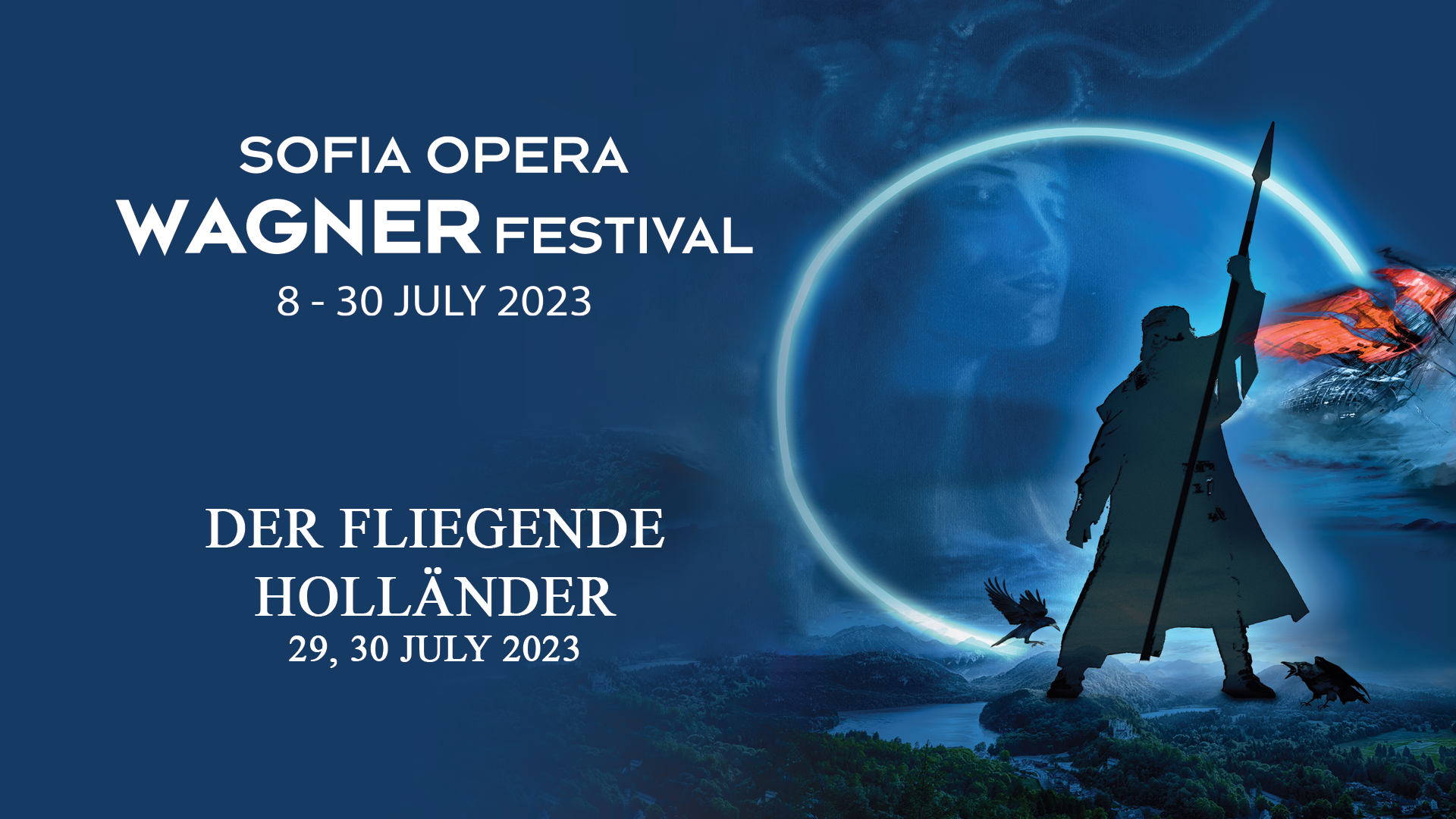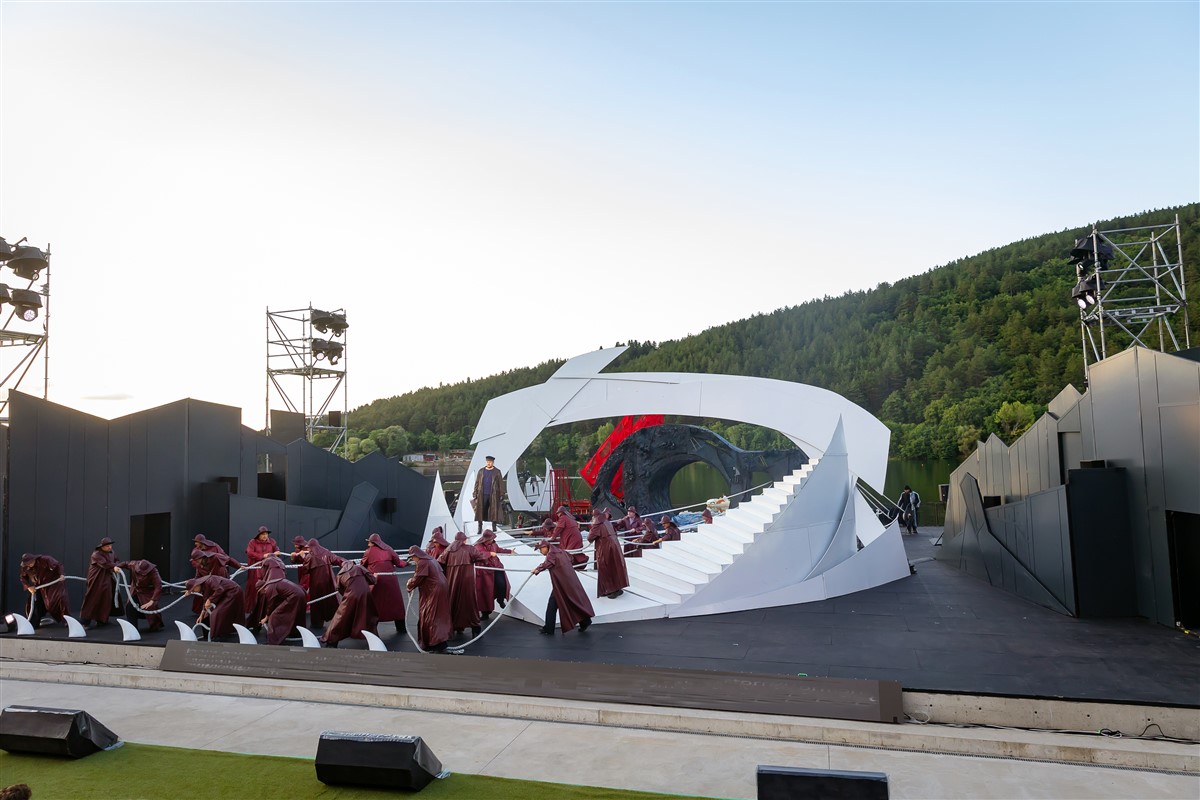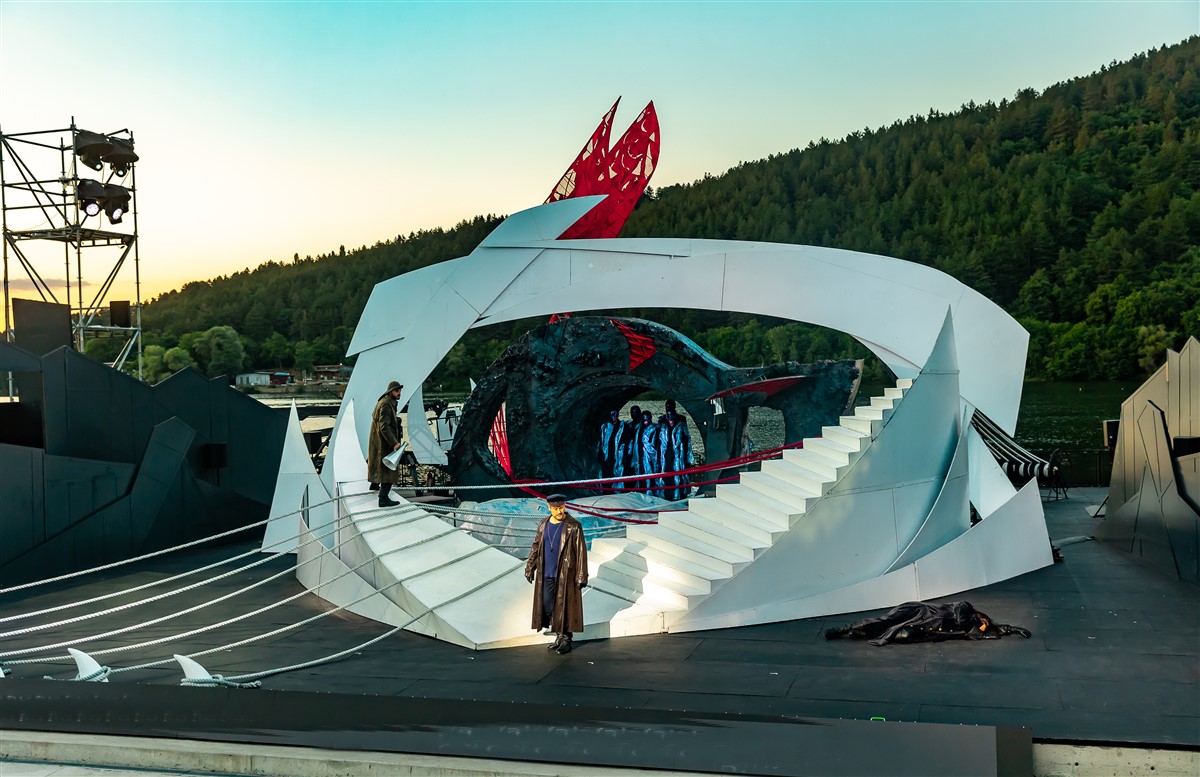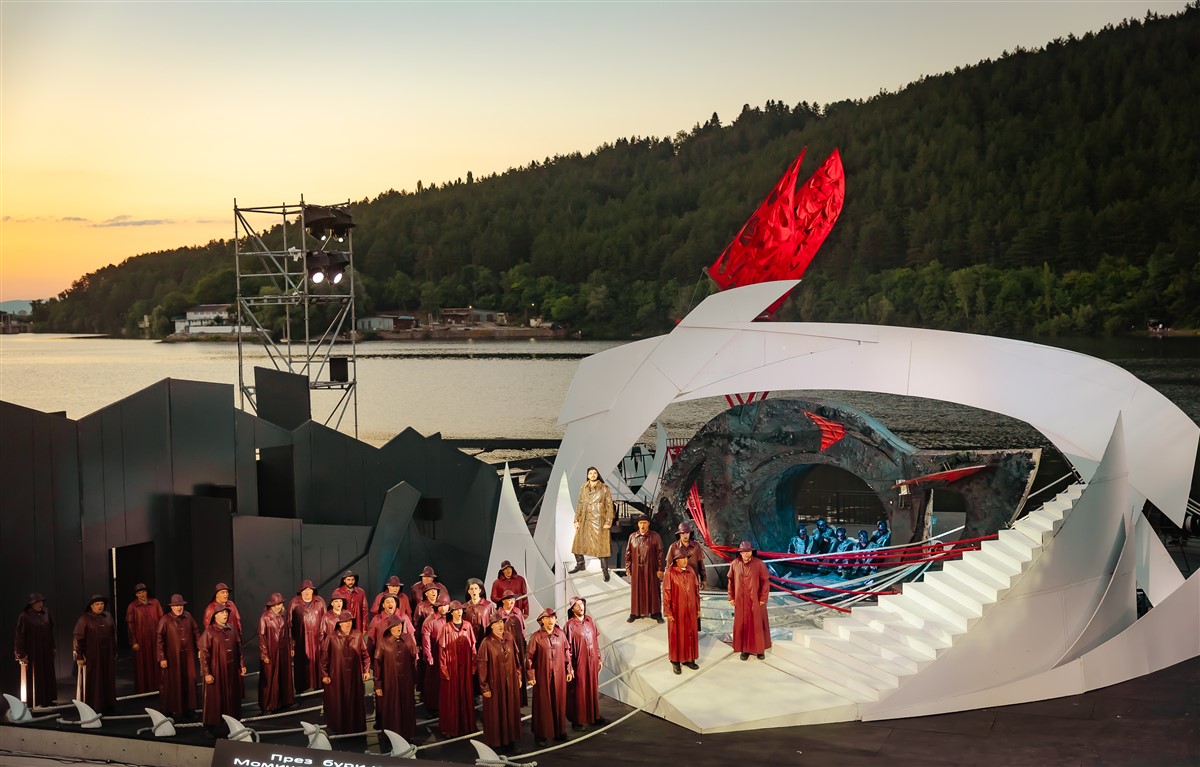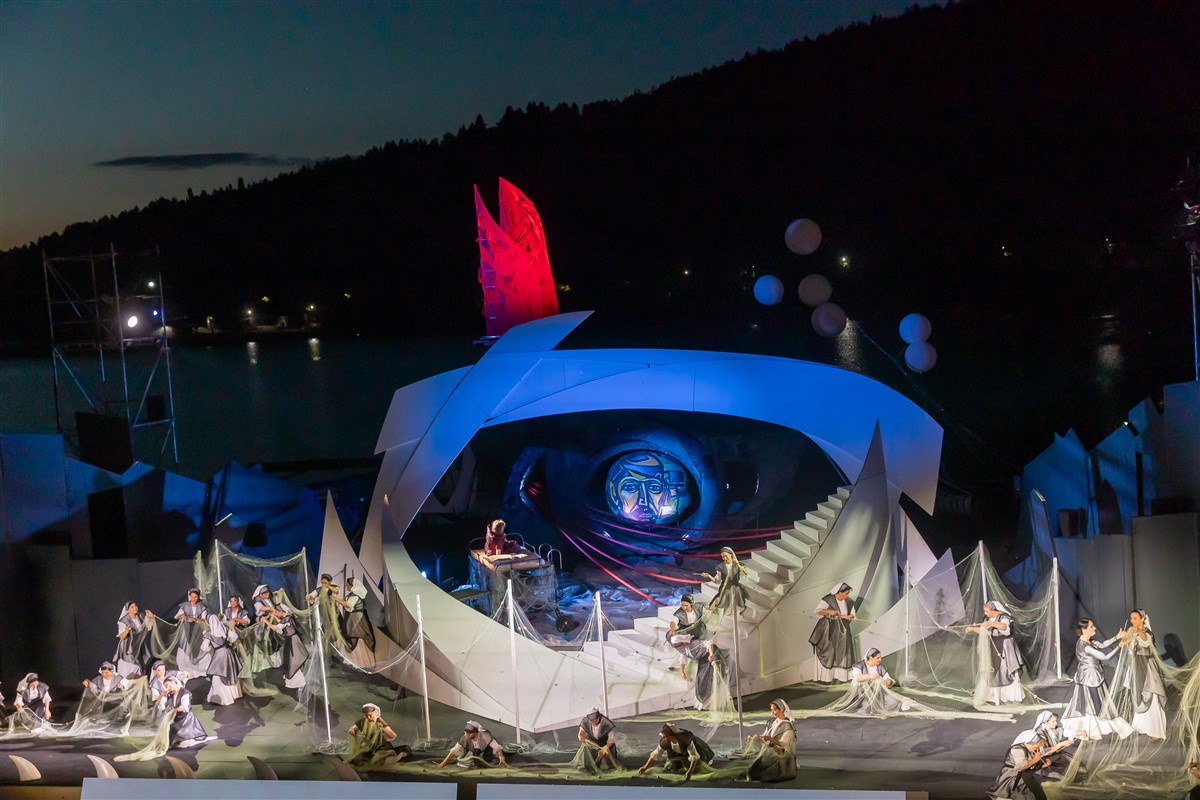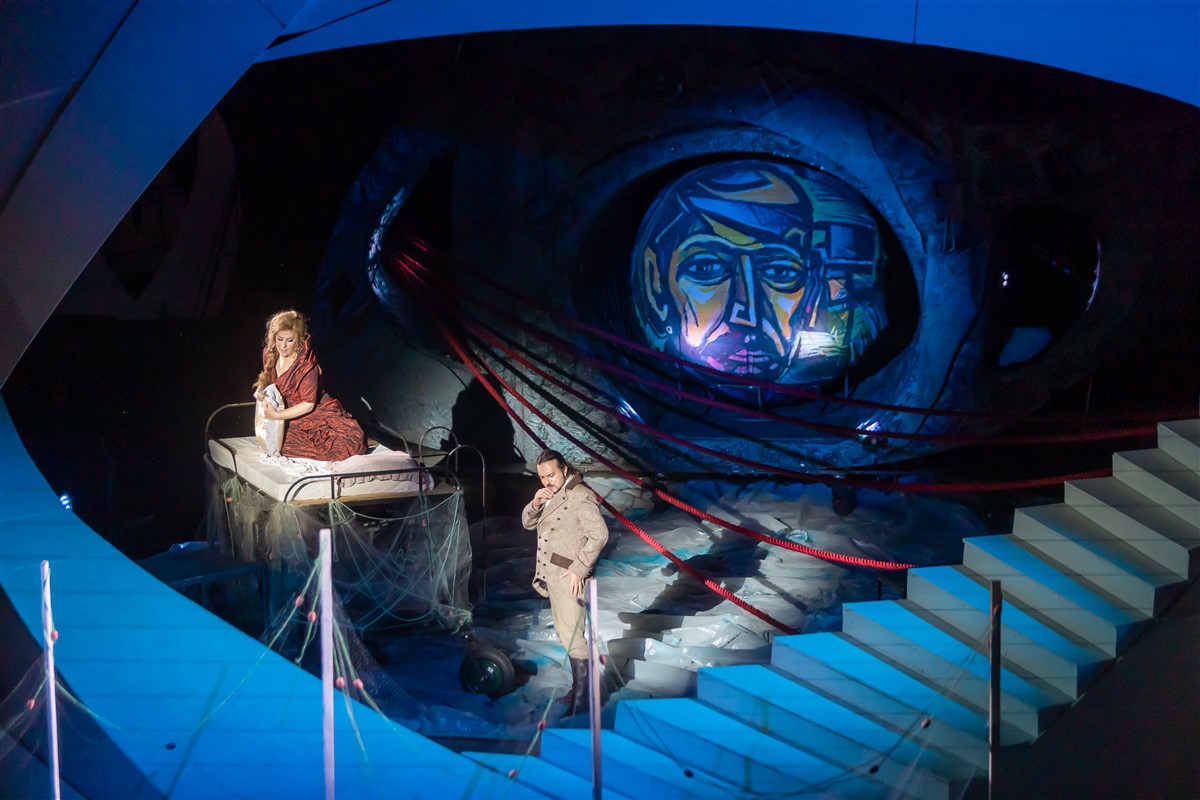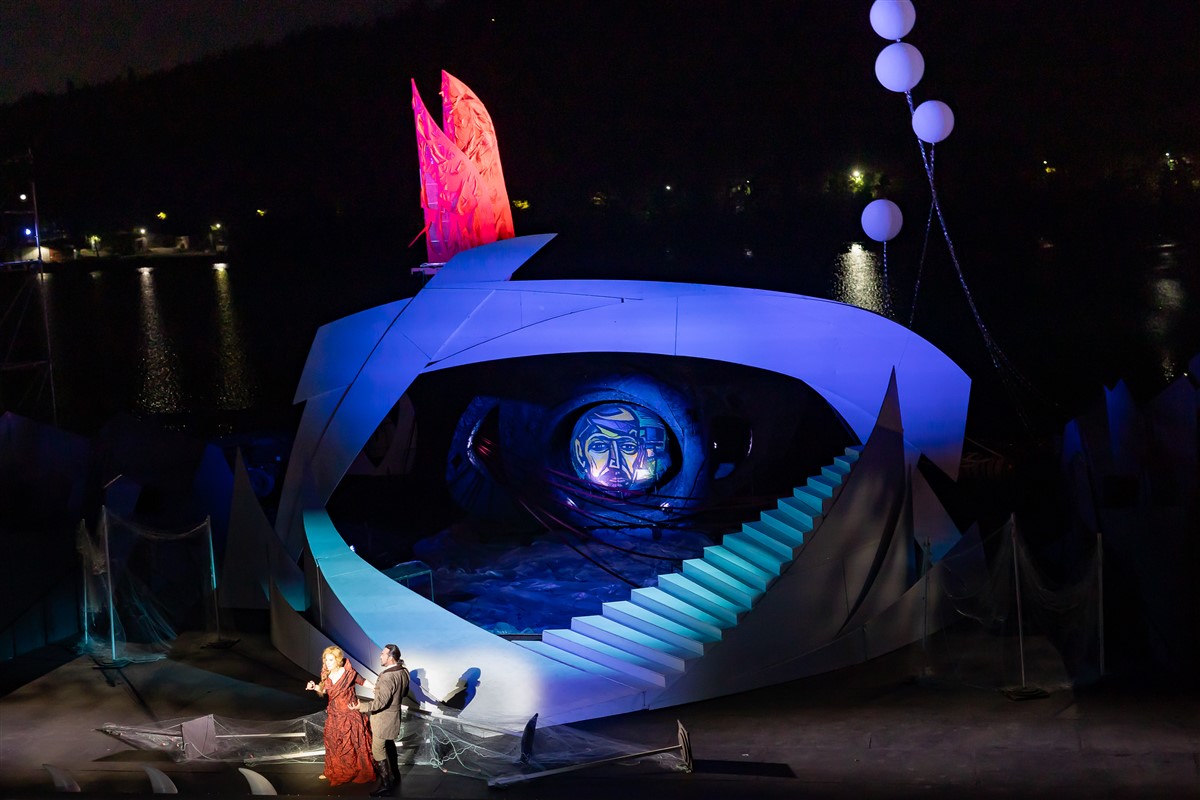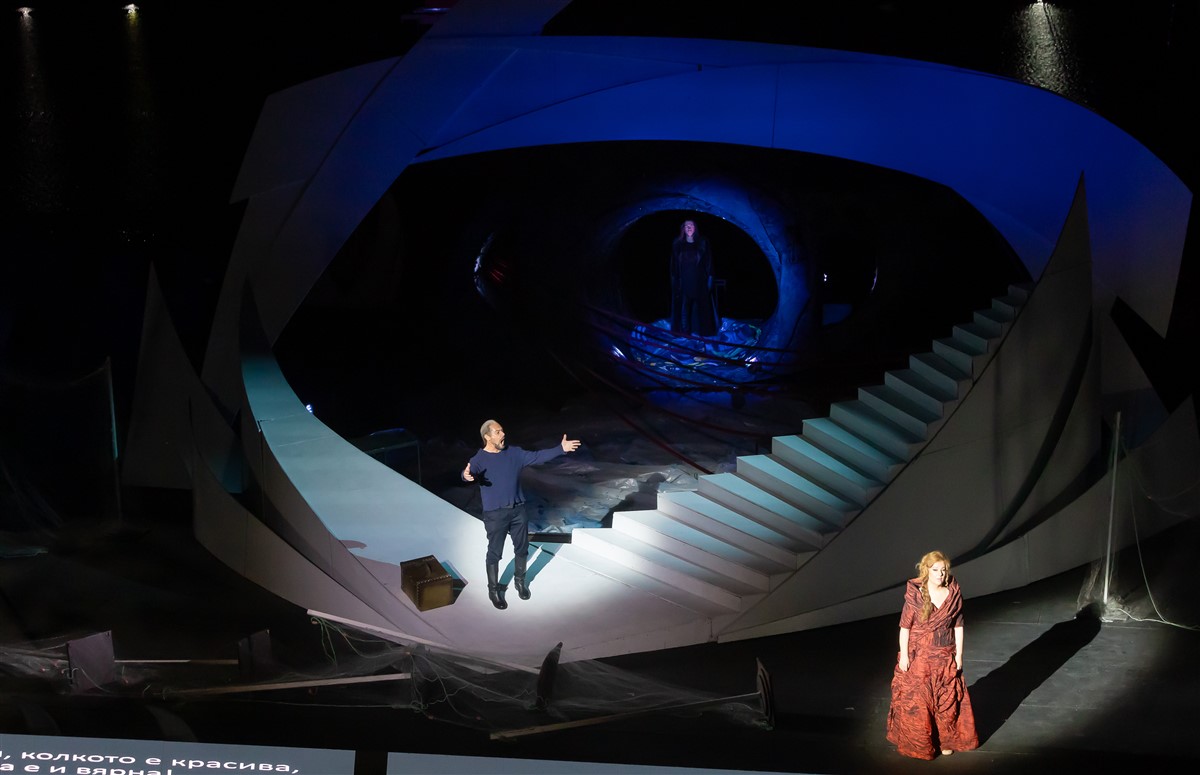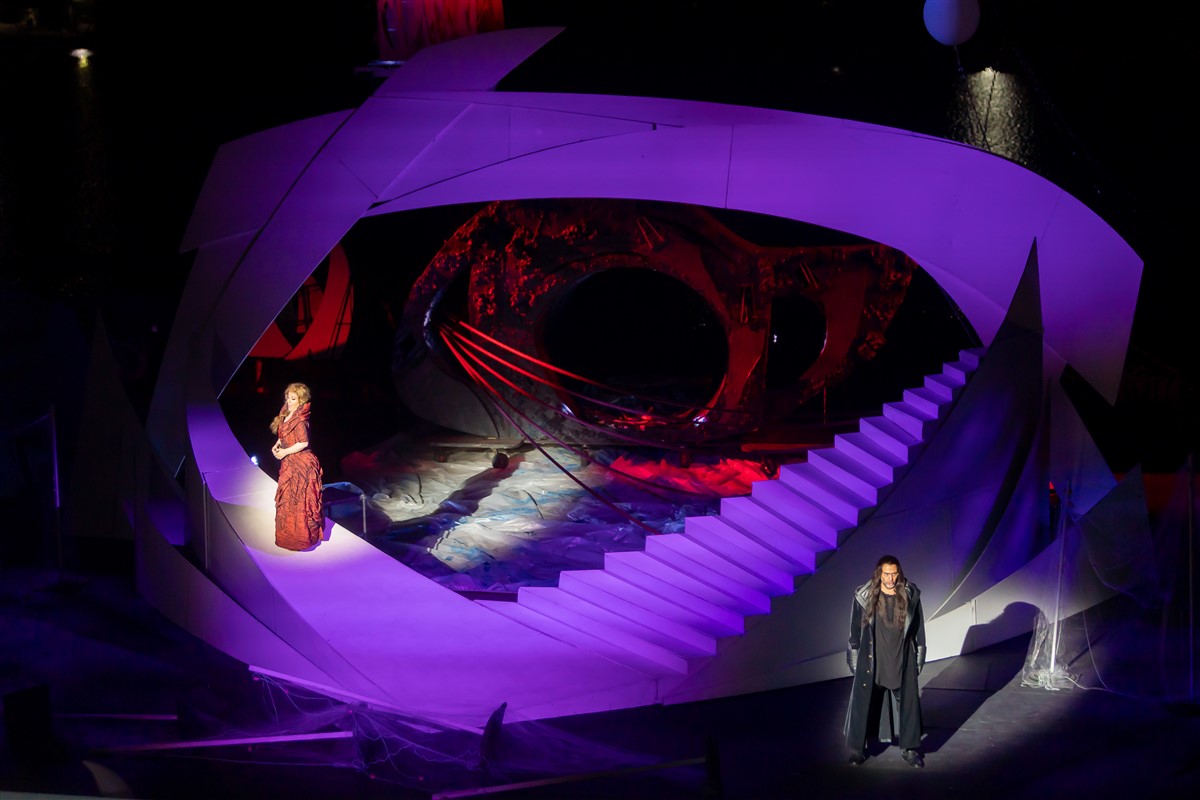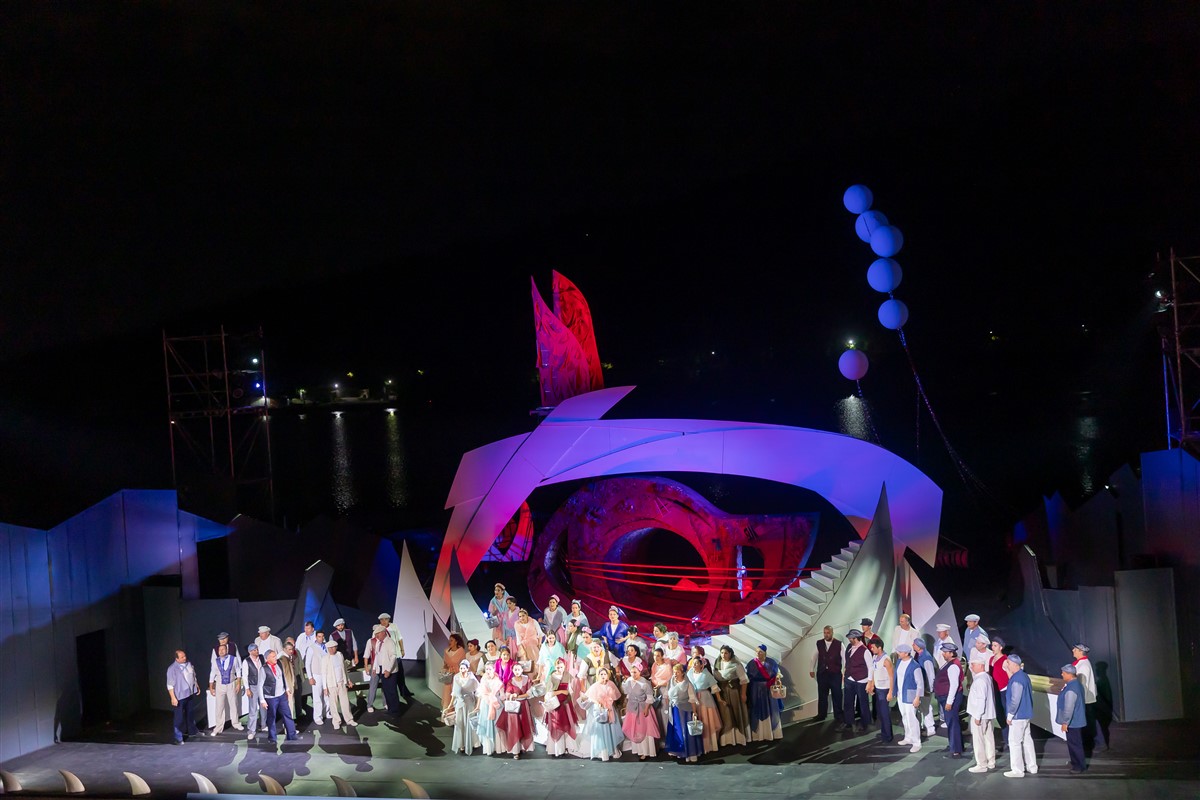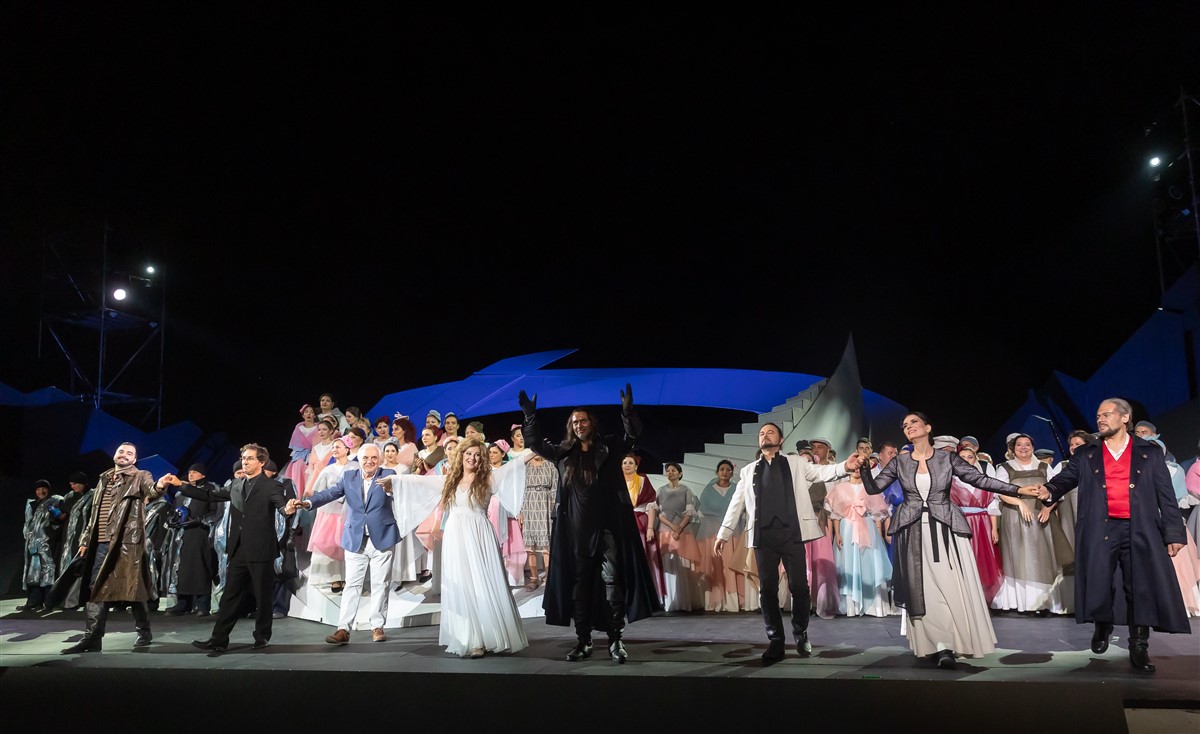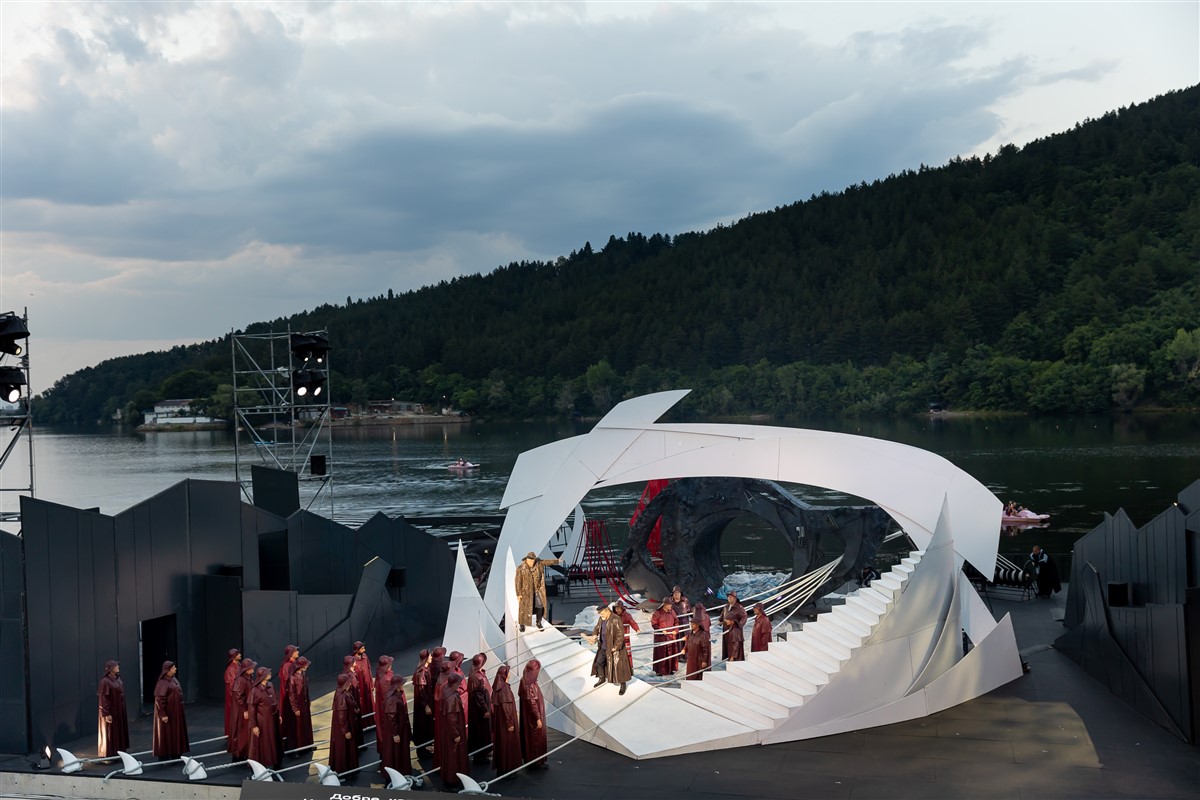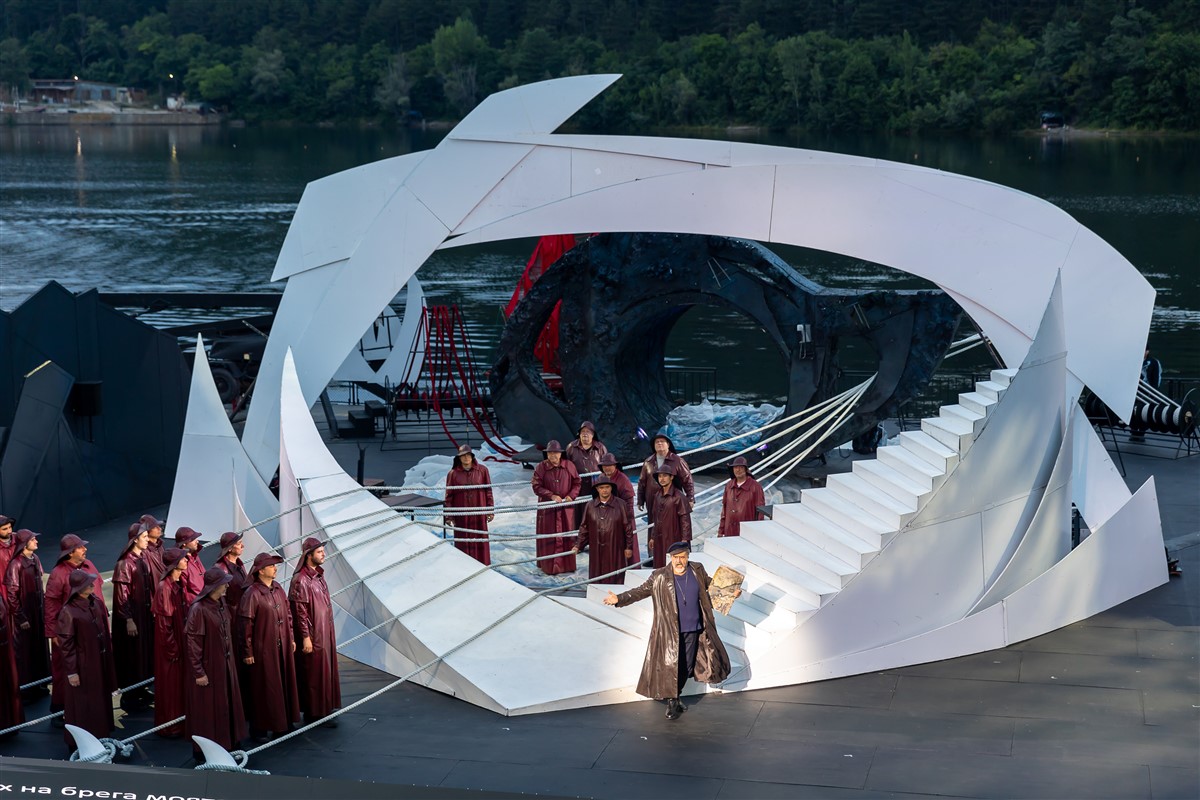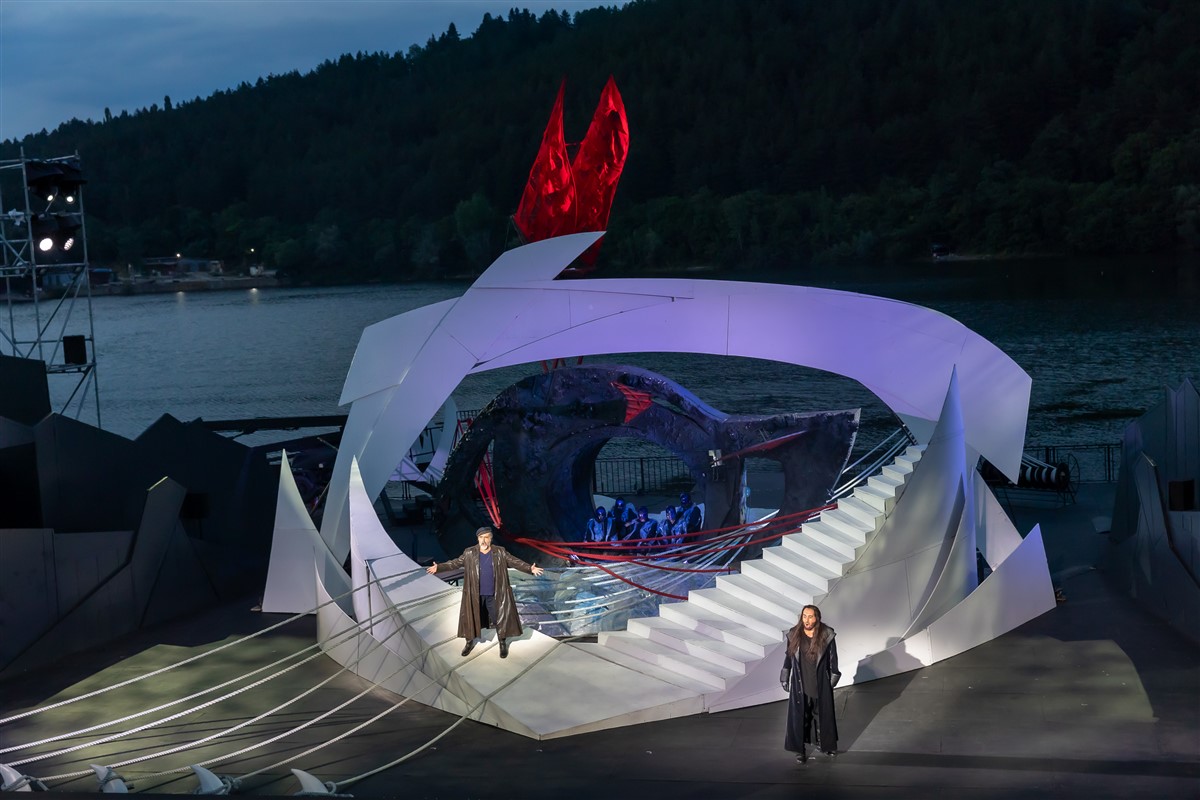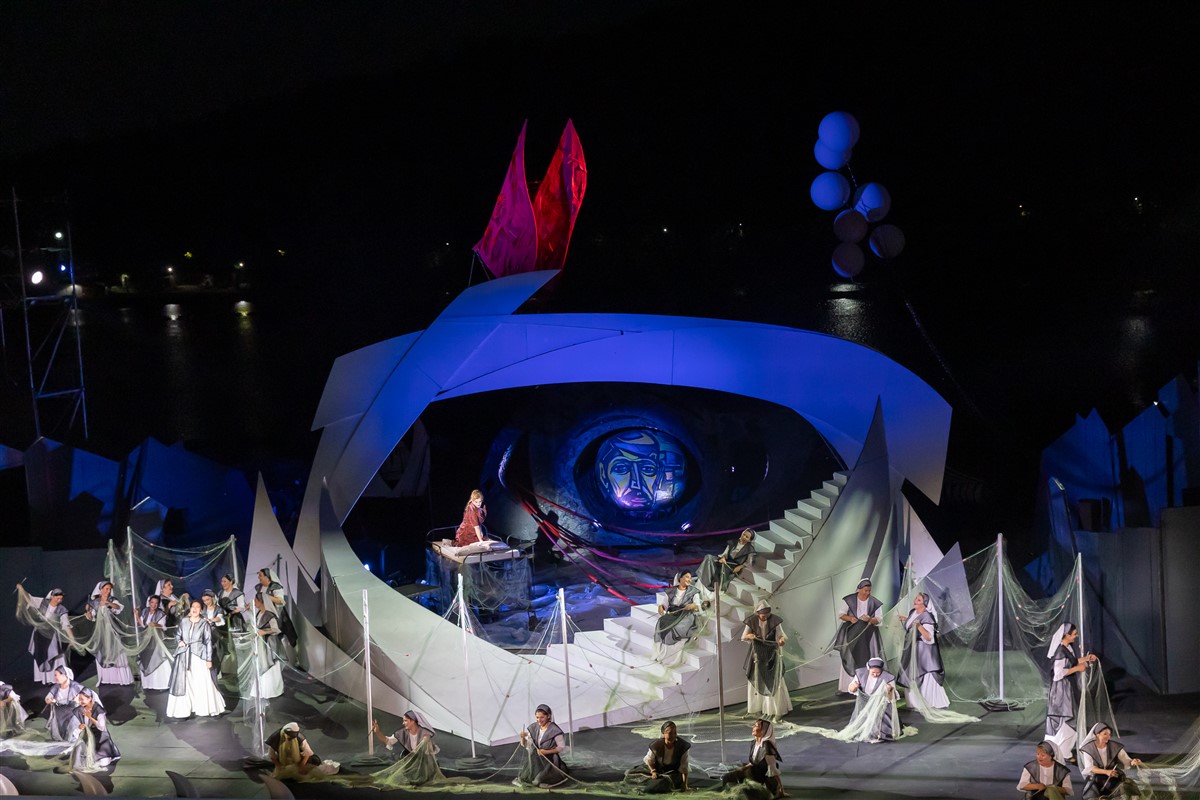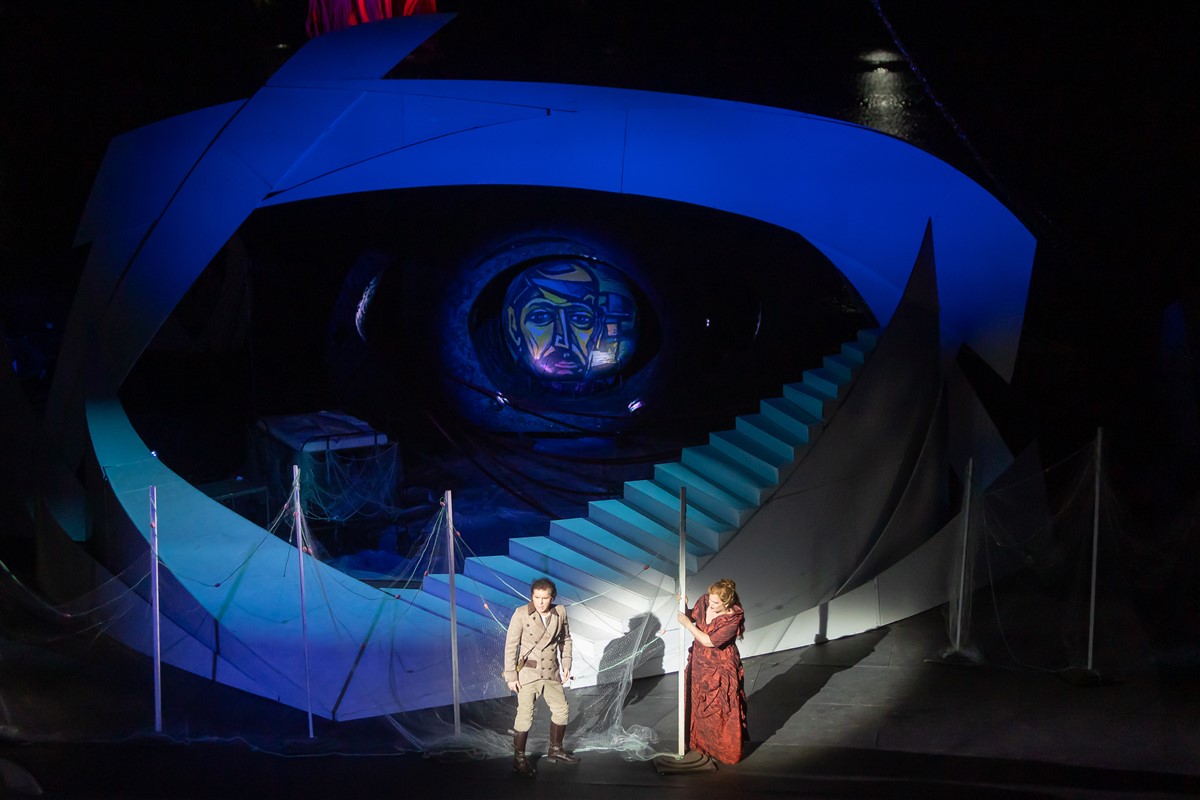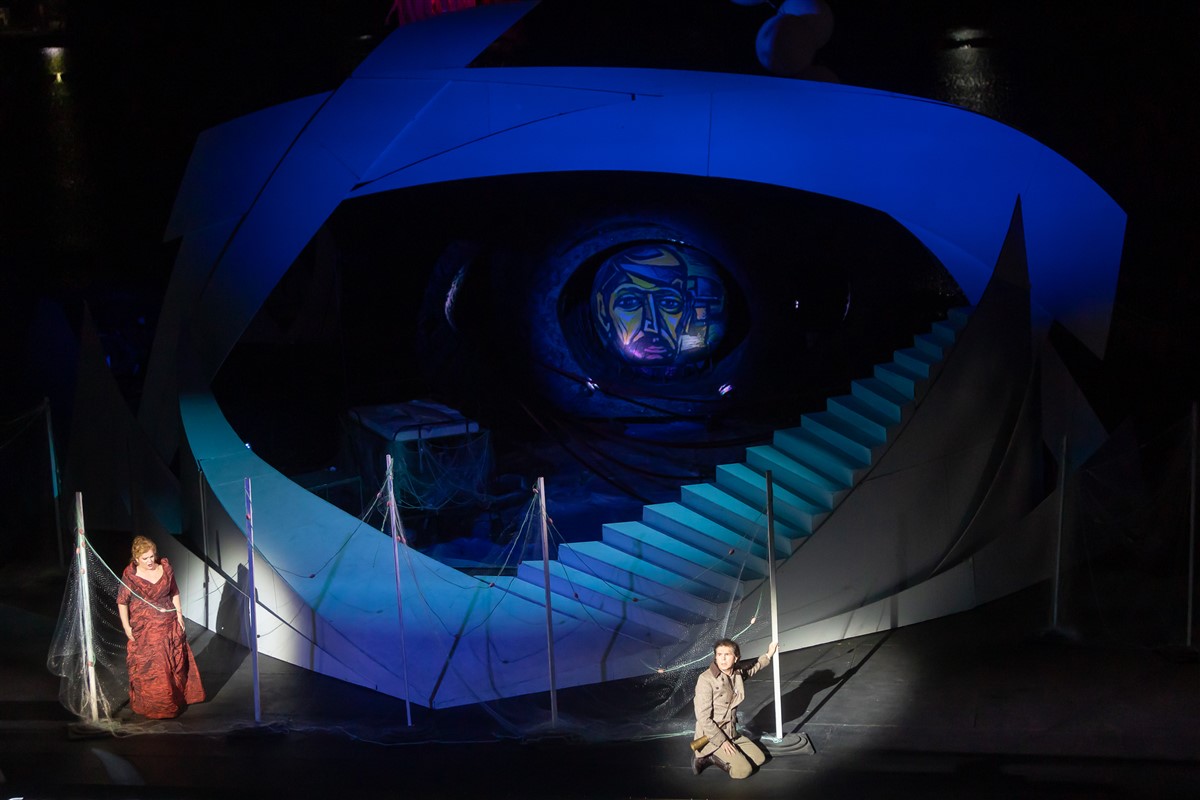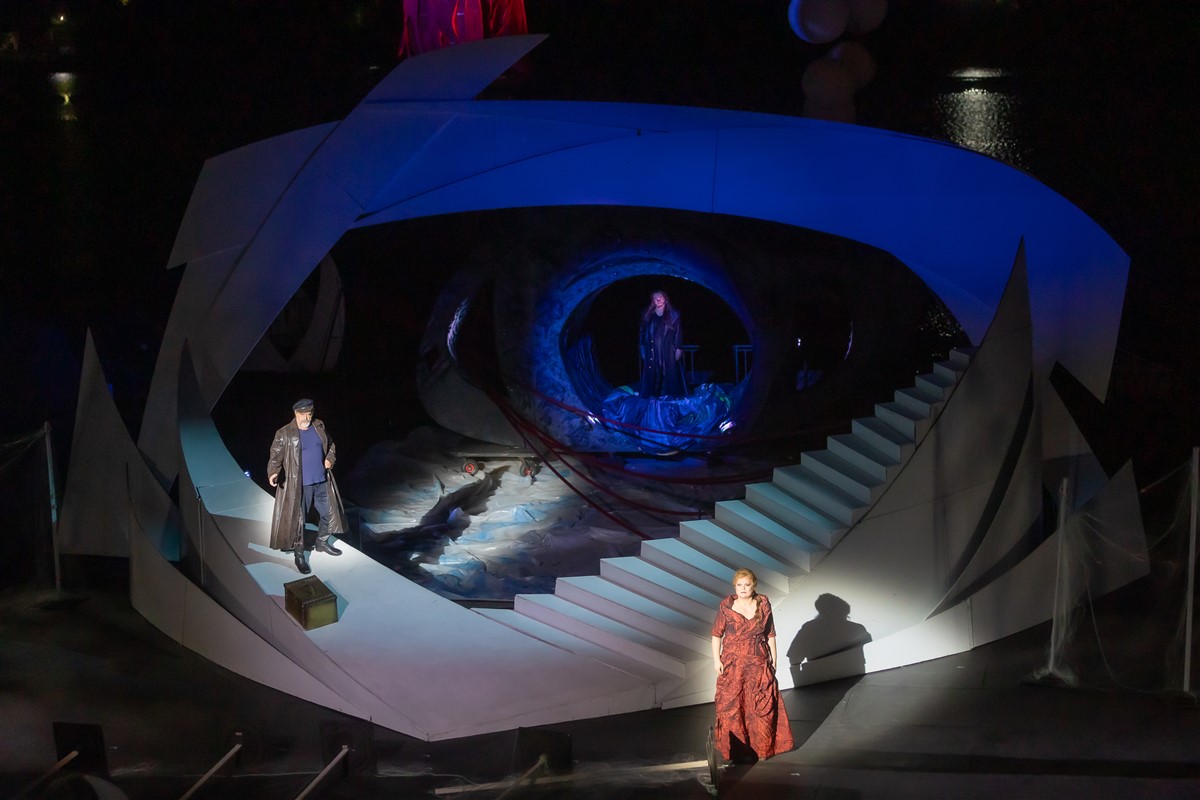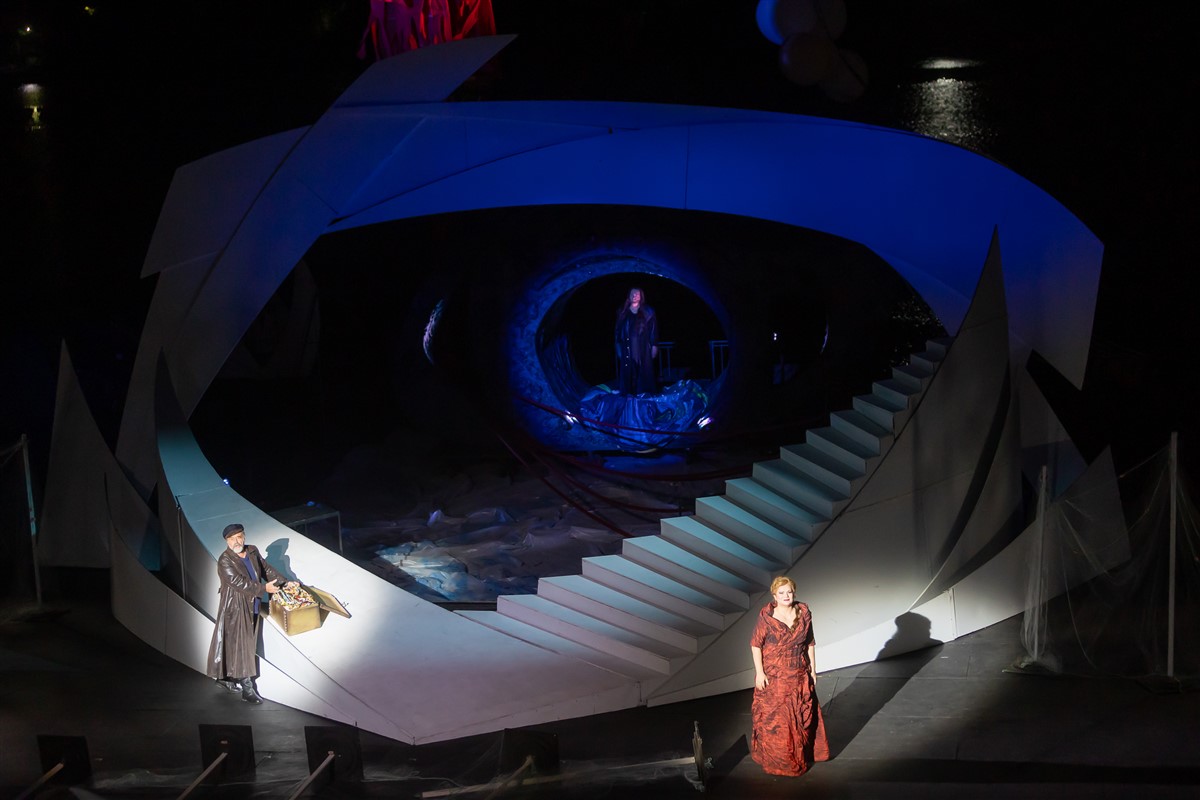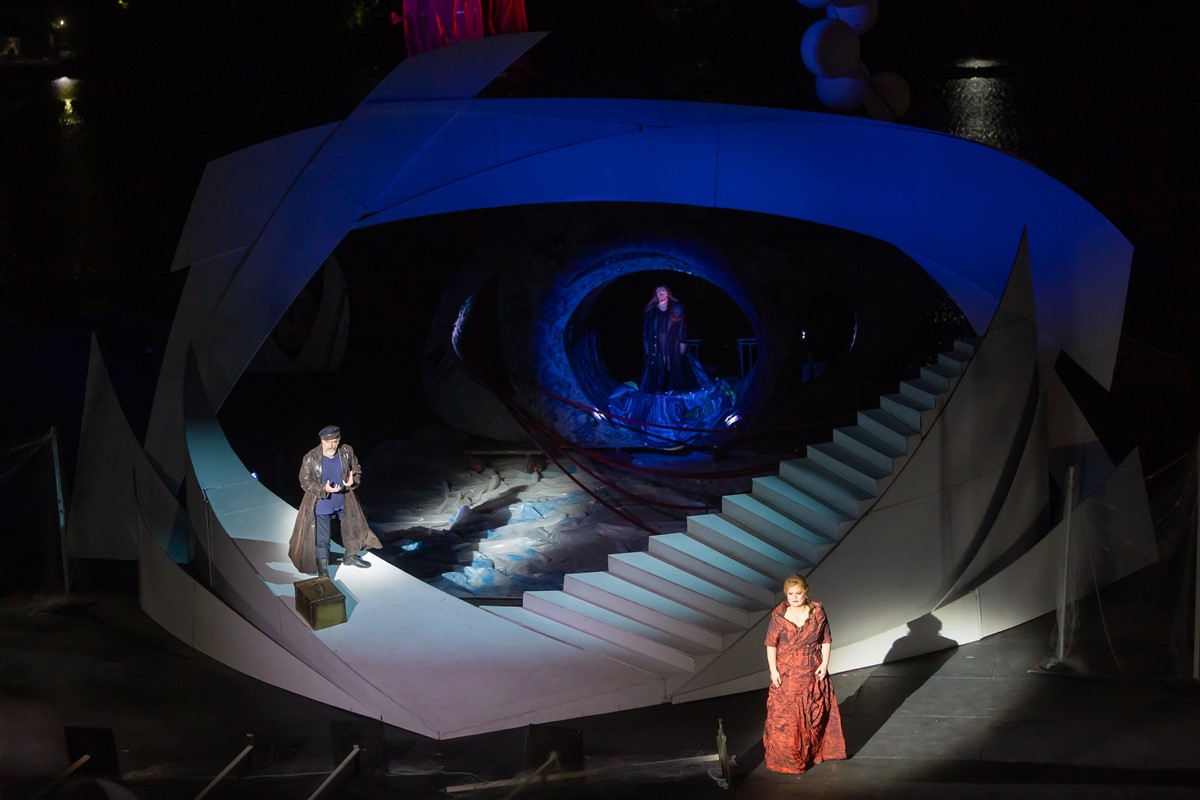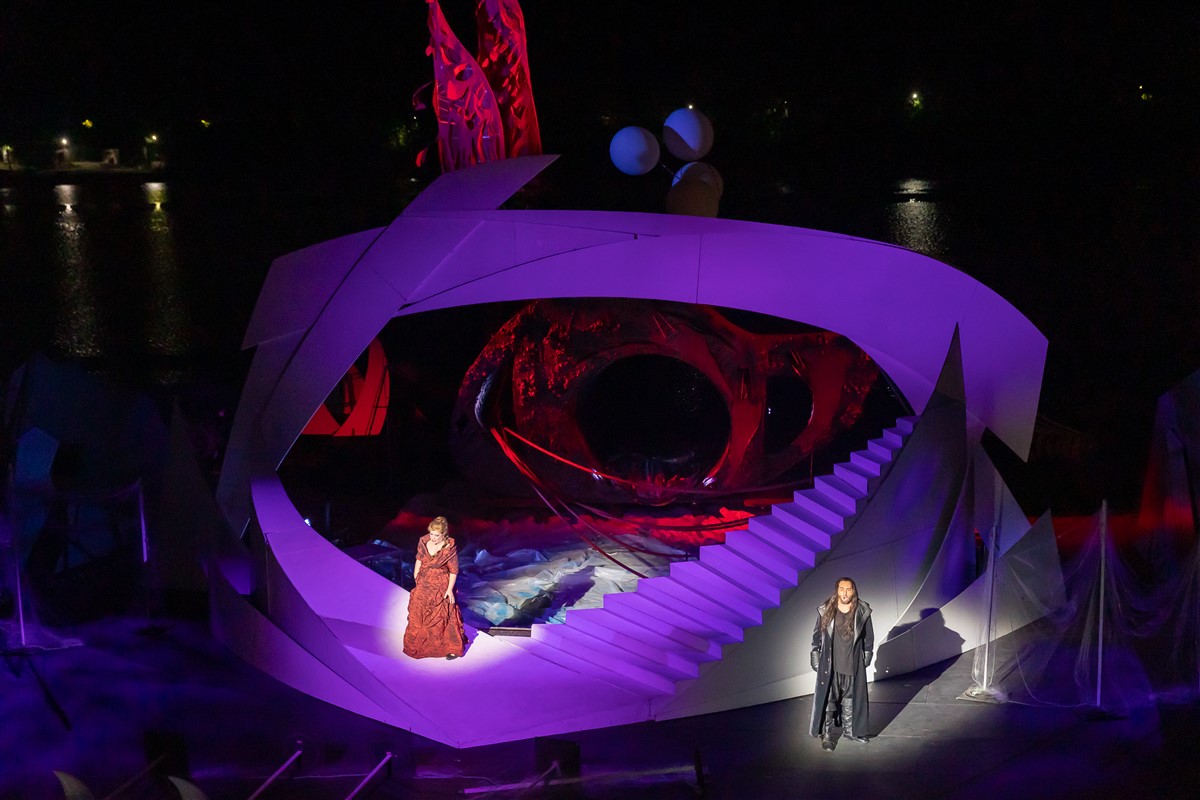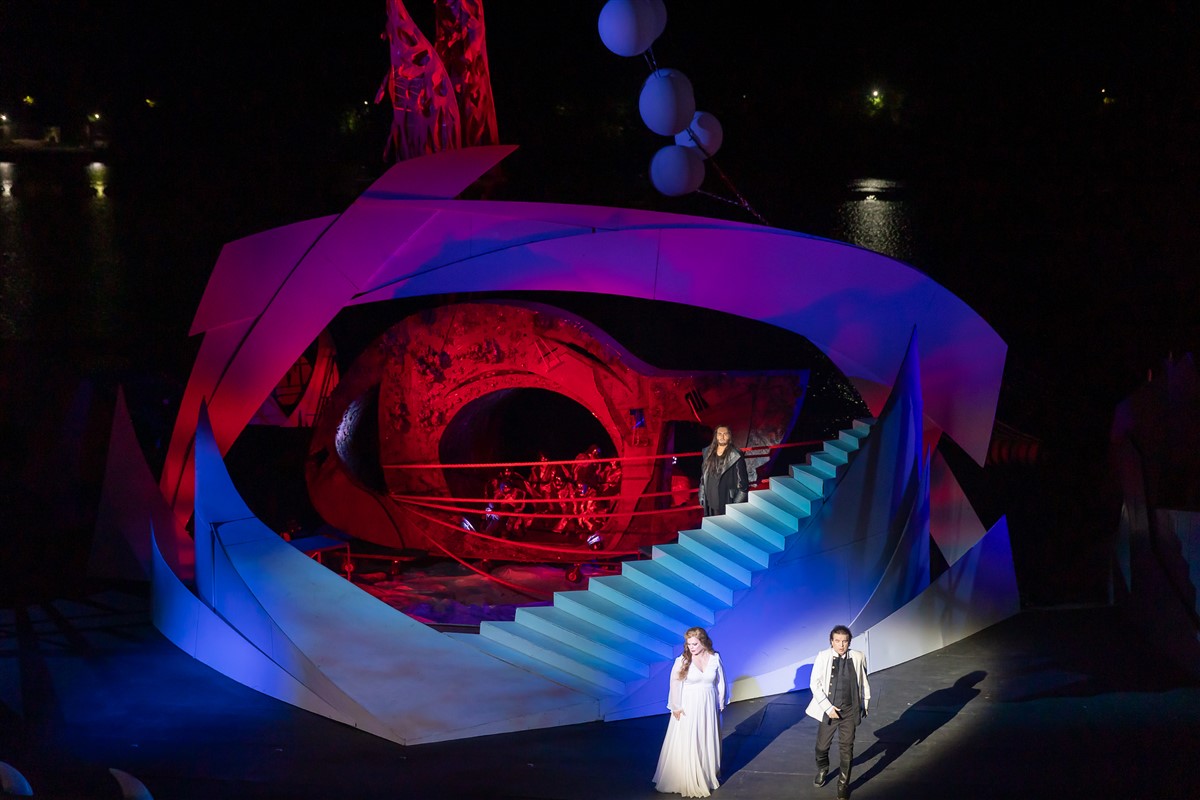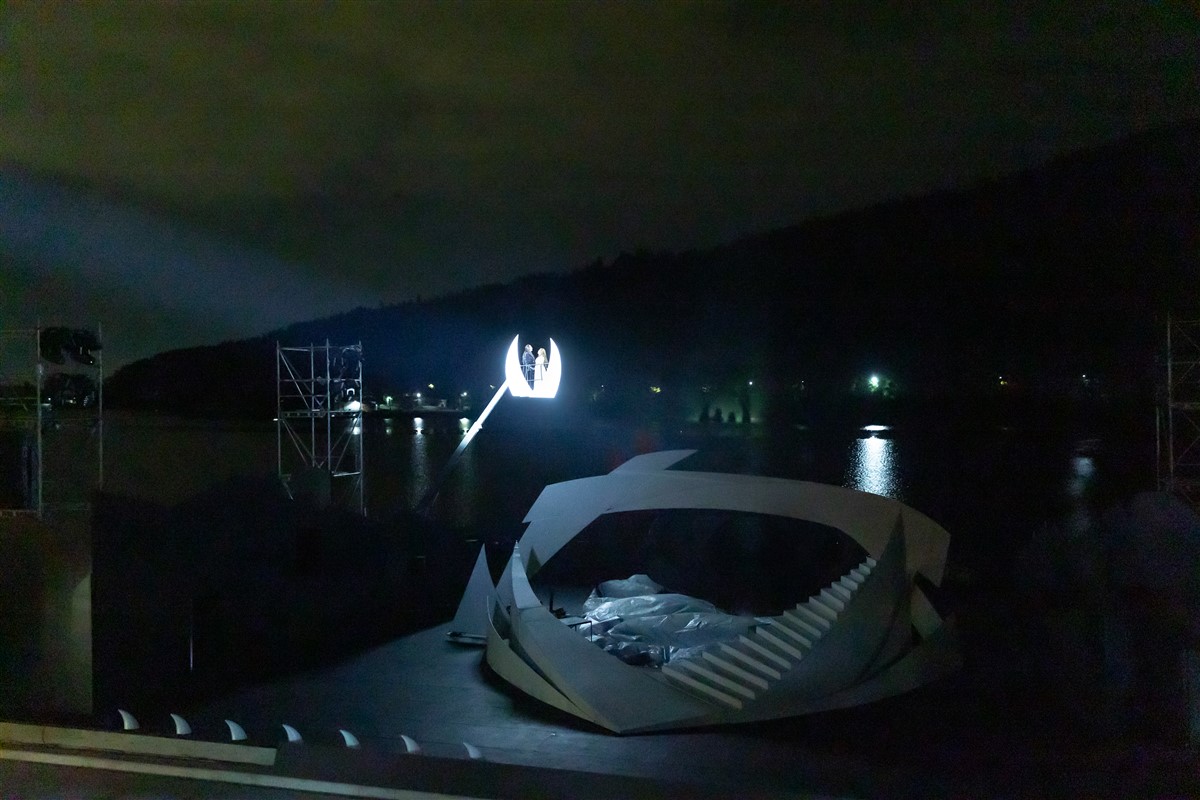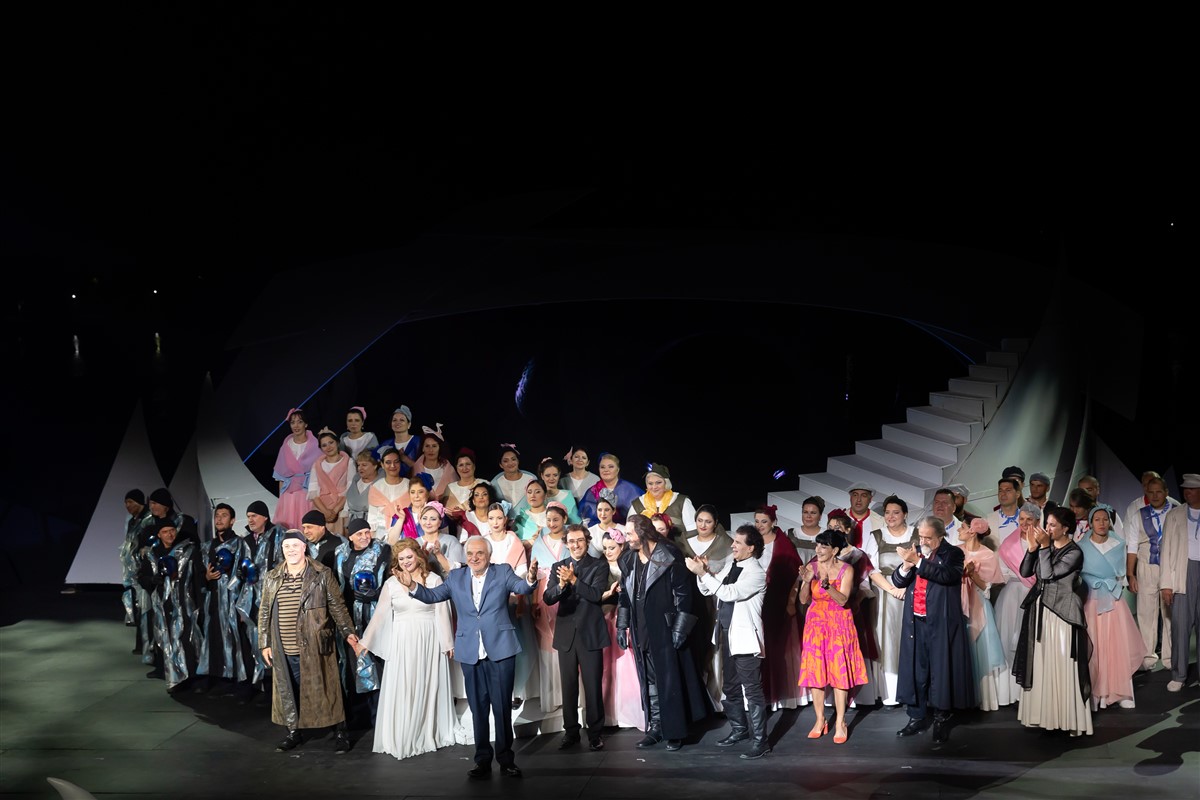Two performances of the romantic opera "Der fliegende Holländer" concluded the Wagner Festival of the Sofia Opera.
On both nights the stage of the lake mirror was flooded with the enthusiasm of the hundreds of spectators who came to experience the story of the wandering sailor.
Rossen Gergov, who had specially come from Vienna, conducted the orchestra and chorus of the Sofia Opera. The stunning production, which premiered last year, was directed by Plamen Kartaloff.
On 29 and 30 July, the large audience cheered two fantastic ensembles: Stanislav Trifonov and Ionut Pascu as the Dutchman, Lilia Kehayova and Radostina Nikolaeva as Senta, Biser Georgiev and the Vienna Opera Kammersänger and world-renowned artist Kurt Rydl as Daland, Martin Iliev and Kostadin Andreev as Erik, Alexandrina Stoyanova and Tsveta Sarambelieva as Mary, Daniel Ostretsov and Emil Pavlov as the Steersman.
Guest of the last spectacle of the Wagner Festival was the Prime Minister of Bulgaria, Acad. Nikolay Denkov. After the performance he met the artists on stage and congratulated Plamen Kartaloff on the grand event.
***
Sofia Opera's Wagner Festival in 2023
More than 5000 spectators followed some of Wagner's most difficult works with interest. With its festival, the Sofia Opera has become a centre of attraction for Wagnerians from all over the world. Guests from Germany, France, Austria, Finland, USA, India, Switzerland, Norway, Luxembourg, Australia and Bulgaria applauded each spectacle.
All performances were attended by music critics and journalists from the most prestigious opera editions in the world, who have already started publishing their reviews. The general opinion is that this festival is of an exceptional artistic level, an incredible feast for Richard Wagner fans and a remarkable highlight in the celebrations around the world of the 210th anniversary of the German genius' birth. Critics have noted that Plamen Kartaloff gives a fantastic reading of Wagner's operas and presents to the audience with an astonishing production.
The Wagner Festival, which has found a worthy place on the cultural map of the world, is now history. The courage and audacity of Acad. Kartaloff to present seven Wagner titles with an almost entirely Bulgarian singing ensemble was crowned with triumph. Throughout the evenings of the festival, huge applause and recognition were given to all the soloists, conductors, orchestra, chorus and ballet, assistant directors and stage directors, all the artistic studios, technical services and administration of the Sofia Opera.
The deepest bow goes to Plamen Kartaloff – the man who carried everyone away with his undying energy in the incredible Wagnerian journey and made it unforgettable!
Here are the soloists and the production team that closed the Sofia Opera Wagner Festival.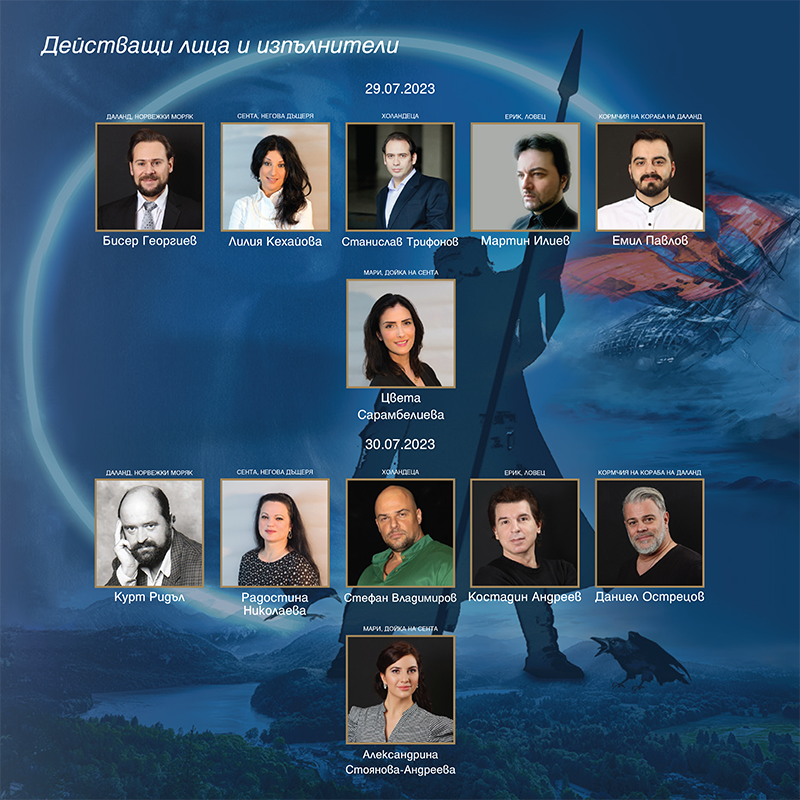
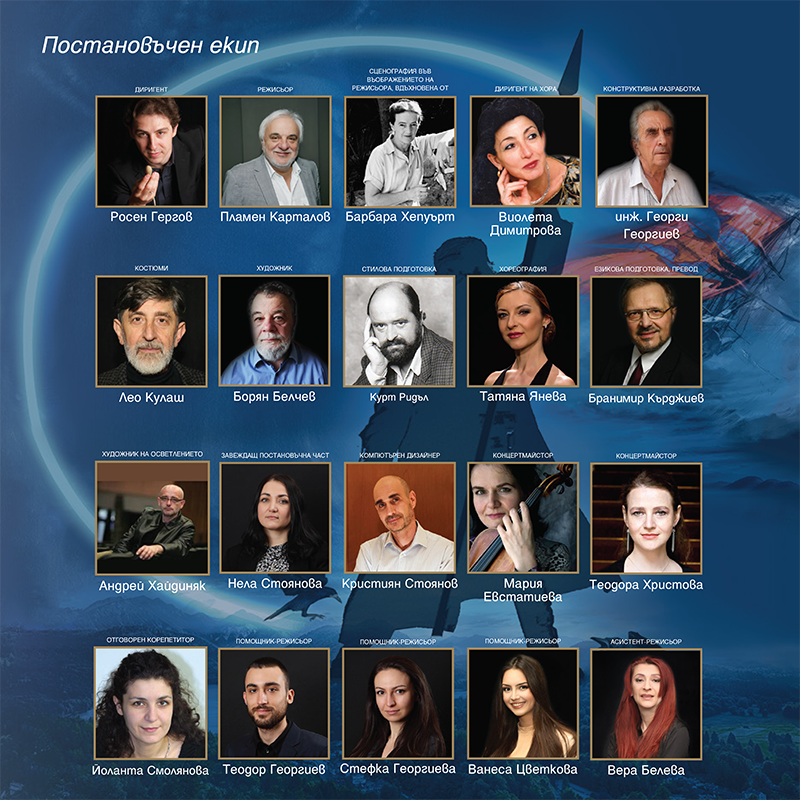
"Der fliegende Holländer" is Richard Wagner's most popular and most frequently staged opera. The work is one of the crowning achievements of German Romantic opera, in which the inner world of the characters and their drama is revealed with deep insight.
"Der fliegende Holländer" unfolds the theme of whether love is the most powerful weapon, whether fidelity is the most precious virtue and how fate intervenes when we have to find the right path.
Opera Synopsis
A rocky seashore. Norwegian sailor Daland's ship has taken shelter from a raging storm in the bay. The sailors see a ship with red sails and black masts. It is the ship of the Flying Dutchman, over which a terrible curse lies – to roam the seas forever. In vain has he defied death. His ship has not been submerged by the worst storms. The only thing that can save him is for a woman to love him and be faithful to him till death. But such a woman he still cannot find. The Dutchman asks Daland to take him into his home for just one night. In return he would give him great treasures. The old sailor tells him about his daughter Senta. The sailor-roamer's soul is filled with the hope that perhaps he will finally meet the woman he is looking for. The wind calms down and the two ships head for Daland's homeland.
Senta's friends have gathered at Daland's house. The girls are spinning and singing. Senta does not take his eyes off the old portrait of the sad and thoughtful sailor. The girls talk to Senta about Erik, who is in love with her. Senta sings the old ballad about the sailor-roamer, wandering the seas incessantly. Every seven years he goes ashore to find the girl in love with. Everyone is thrilled by this story. Unexpectedly, Senta declares that she will save the Dutchman. Erik enters. He has heard Senta's last words. This intensifies his embarrassment. Erik had a dream that some alien ship had arrived and the sailor in the portrait… had come off it. He was greeted by Senta. Then the two, passionately embracing, disappeared into the sea. Now, indeed, some strange ship had arrived with her father's ship. This made Senta dream all the more strongly of the rescue of the sailor-roamer. Desperate, Erik goes out. Daland enters his home, accompanied by the Dutchman. Senta is greatly moved – the stranger's face bears a striking resemblance to the sailor in the portrait. The Dutchman is not himself either. He asks the girl if she agrees to become his faithful wife. Senta swears eternal love and fidelity to him.
The Norwegian sailors joyfully celebrate the happy return. Joyful songs are heard. Only on the foreign ship are all the lights switched off. The Norwegians invite the sailors from the other ship to join in the merriment, but no one answers from there. Suddenly a strong wind blows. The moon sinks into the clouds, and amid the splashing of sails from the Dutch ship a wild song is heard. Everyone is frightened. The feast is spoiled, people leave. Senta heads for the Dutch ship at a run. Erik catches up with her and begs her to give up her foolish thought. He reminds her of his love, of the happy moments they spent together. At that moment, the Dutchman arrives. Erik's words bring back his despair. And now he hasn't met the woman he's been looking for so long. The Dutchman tells everyone about his fate. And he boards the ship again to continue his endless wanderings. Senta descends after the slowly receding ship. She can't step on the oath she has taken. The maiden throws herself into the sea. Suddenly the ghost ship sinks. With her death, Senta has freed the eternal wanderer from the curse that weighed over him...
Curious!
In his 1870 autobiography, "My Life", Wagner claimed to have been inspired to write "Der fliegende Holländer" after a voyage in rough seas that he made from Riga to London in July and August 1839. In his 1843 "Autobiographical Sketch", he says he was also captivated by the story by Heinrich Heine, which tells the legend in the satirical novella "Memoirs of Herr von Schnabelewopsky".
The central theme is redemption through love, a theme Wagner returned to in many of his subsequent operas.
"Der fliegende Holländer" is a romantic opera in 3 acts and was first performed on 2 January 1843 under the baton of Richard Wagner himself.
The first production in Bulgaria of "Der fliegende Holländer" was in 1930, conducted by Assen Naydenov and directed by Ilia Arnaudov.
What does the legend tell?
According to one legend, the story of "The Flying Dutchman" began in 1641 when Dutch Captain Hendrik van der Decken and his crew were returning to Holland from a voyage to the Far East. At this time, expeditions were becoming more frequent, and economic relations between the continents were slowly beginning to be established. The captain was returning from distant India, with a ship loaded with all kinds of spices, silks, dyes. The way home was through the Cape of Good Hope, and all merchant ships had to risk its dangerous passage. Until then it was the only route to Europe.
The legend tells that as Van der Decken and his crew rounded the bow, a fierce storm began. The captain was experienced and attempted to round the Cape of Good Hope on the South African coast. This part of the continent was known for its powerful storms and treacherous rocky shores, where tragic accidents often occurred. Cape of Good Hope in South Africa once had a far darker name – the Cape of Storms.
And so, after the terrible storm broke, the crew asked their captain to abort the voyage, but he was determined to face the driven mad waters and rough winds and ordered his crew to continue. He swore that he would make it, even if he had to sail until Judgment Day. The devil seemed to hear his oath; the Dutchman was condemned to remain forever at sea. His only hope of salvation was to find a woman who would love him enough to be faithful to him for life. The Dutchman's tragic fate was compounded by the curse of coming ashore only once every seven years to seek the true love that would save him from eternal sailing. Since then, there has been no sign of the ship. The Flying Dutchman was said to appear as a ghostly, glowing ship. Some claim that the ship, doomed to sail the seas forever, was trying to make contact with other ships and that the apparition of the Flying Dutchman is a sign of terrible misfortune to come.
Tickets for the spectacles of the festivals "Muses on the Water" in Sofia and "Opera of the Peaks" in Belogradchik can be purchased here.
